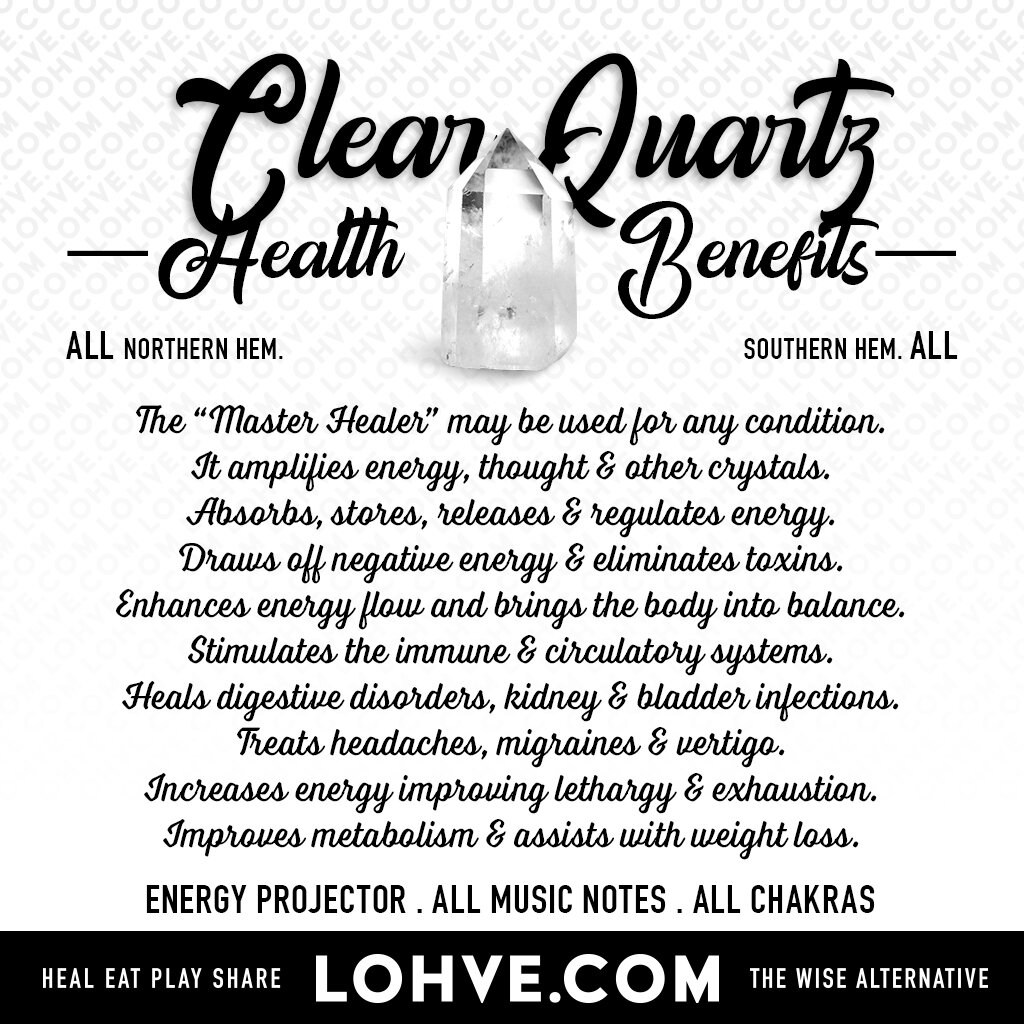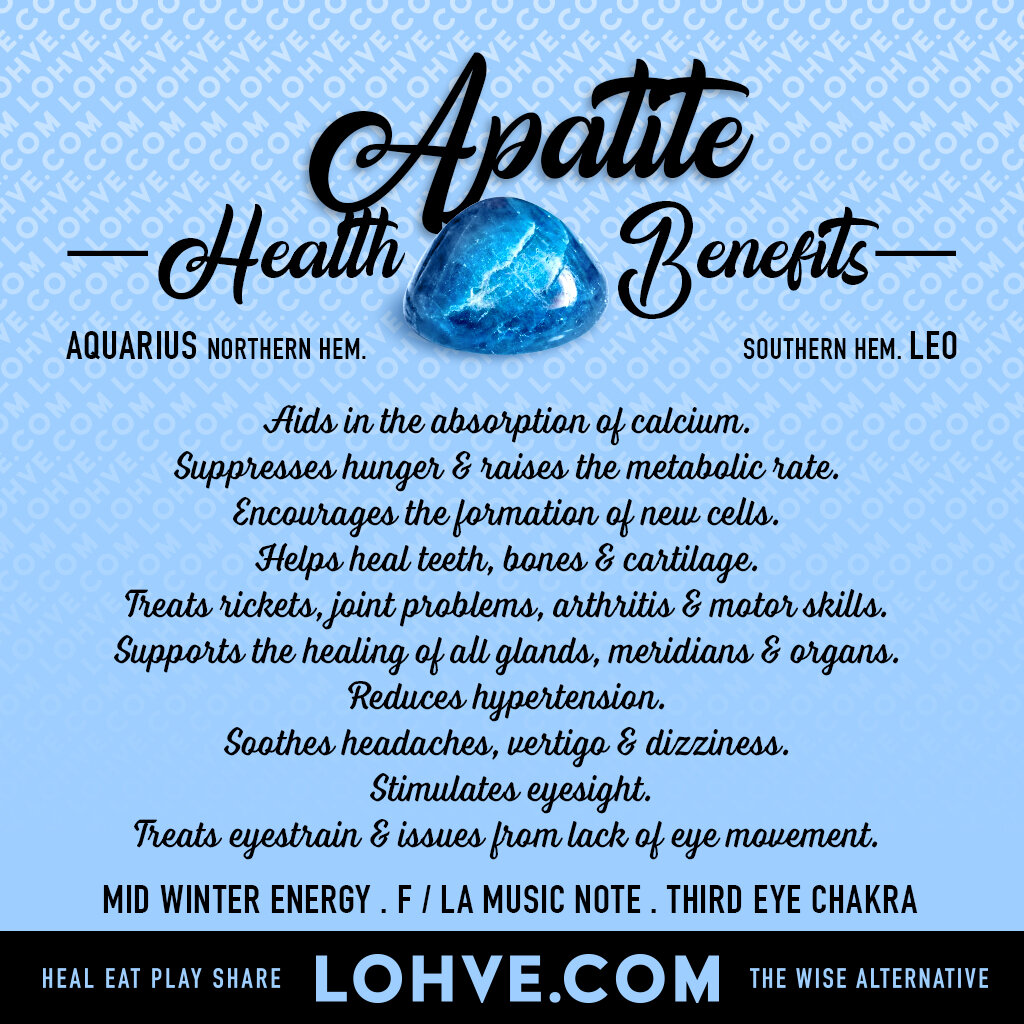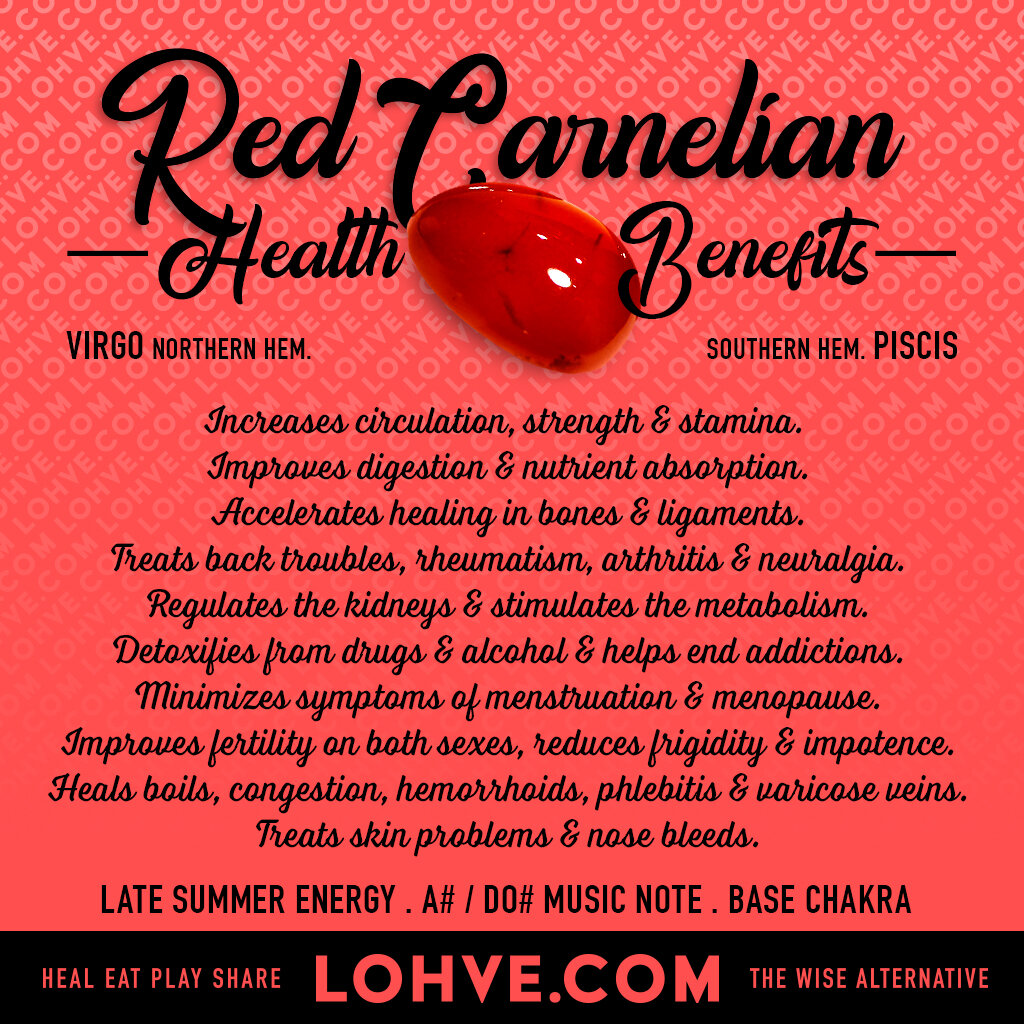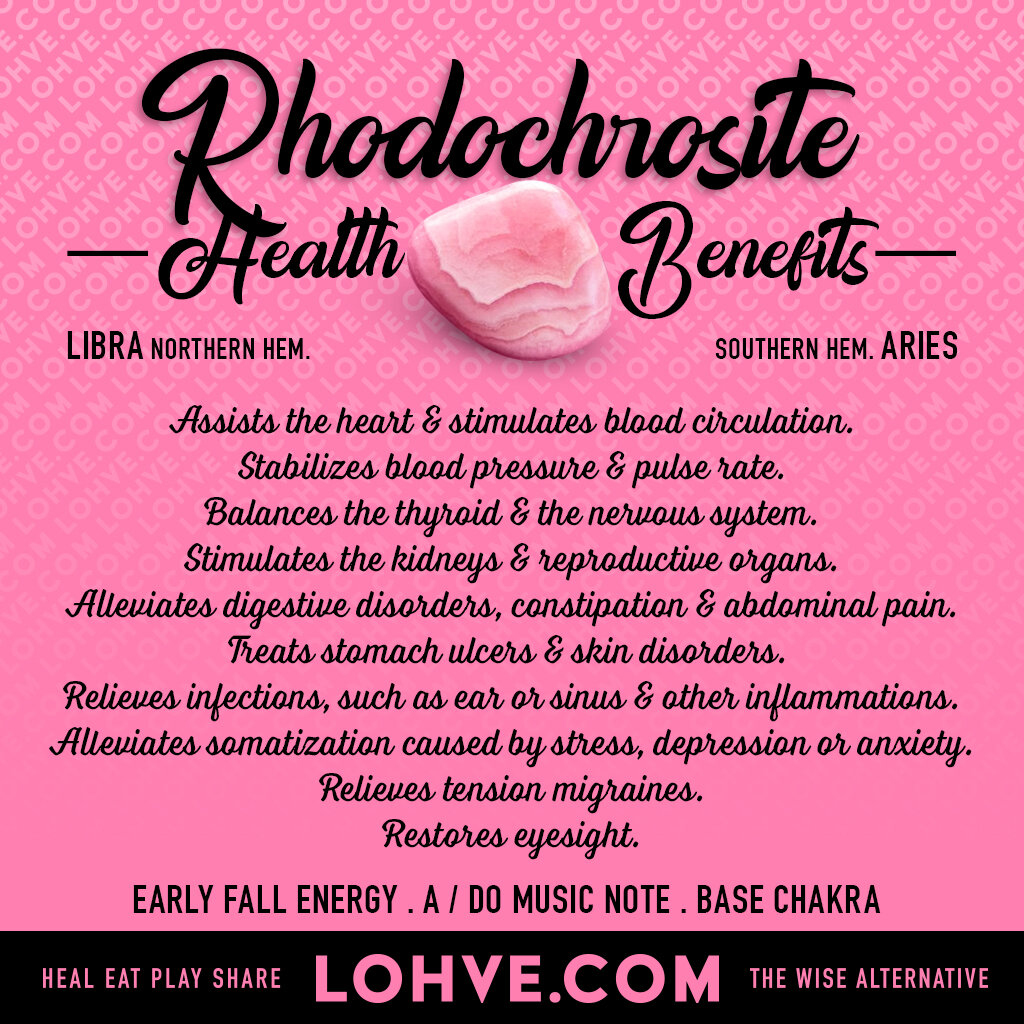EMERALD
Emerald treats disorders of the heart, lungs, spine & muscular system. Detoxifies the liver & aids in recovery after infectious illness Alleviates diabetes & rheumatism. Treats the gall bladder, pancreas, kidneys & re-vitalizes organs. Assists in the healing of malignant conditions. Helps sinuses, allergies & averts sinusitis. Wards off epilepsy, fever & headaches. Soothes the eyes, improves vision & restores eyesight. Relieves eczema, rashes & skin irritations. Rejuvenates & combats aging.
Natural, transparent Emerald is one of four “precious” gemstones (including Diamond, Ruby and Sapphire), and is the green variety of Beryl, a beryllium aluminum silicate mineral colored by trace amounts of chromium and/or vanadium. Emerald occurs in hues ranging from yellow-green to blue-green, with the finest being a pure verdant green hue, medium to dark in tone. Light colored gems are usually known by the species name, Green Beryl. Most Emeralds are highly included with surface breaking fissures, so their toughness, or resistance to breakage, is usually classified as generally poor.
HISTORY
Emerald has been a source of fascination and reverence in many cultures for over six thousand years, sold in the markets of Babylon as early as 4,000 B.C. It was a stone worshiped by the Incas, believed by the Chaldeans to contain a goddess, and was highly honored in all major religions for its spiritual power and beauty. Emerald was considered a symbol of eternal life in ancient Egypt, a gift of Thoth, the god of wisdom, and was a favorite jewel of Queen Cleopatra. The Emerald mines in Upper Egypt, rediscovered a hundred years ago, are some of the oldest in the world and were called Cleopatra’s mines for her love of the stone. Emeralds were also talismans of Aristotle, Alexander the Great, Charlemagne, and the moguls of India. They’ve adorned the crowns and royal jewels of many countries for centuries, and fabulous collections and stunning gems continue to be treasured and displayed by the rich and famous today. [Mella, 84][Eason, 250][www.jewelsforme.com]
COMPOSITION
Emerald is a gemstone and a variety of the mineral beryl (Be3Al2(SiO3)6) colored green by trace amounts of chromium and sometimes vanadium. Most emeralds are highly included, so their toughness (resistance to breakage) is classified as generally poor. Emerald is a cyclosilicate.
HARDNESS
Mohs Scale Hardness: 7.5 - 8
The Mohs scale of mineral hardness is a qualitative ordinal scale characterizing scratch resistance of various minerals through the ability of harder material to scratch softer material.
ENERGY CORRESPONDENCES
LATE SPRING ENERGY
ARIES
Northern Hemisphere
LIBRA
Southern Hemisphere
D# / FA#
Music Note
EMERALD GREEN
Color
HEART CHAKRA
HEALTH BENEFITS
Emerald
Treats disorders of the heart, lungs, spine & muscular system.
Detoxifies the liver & aids in recovery after infectious illness
Alleviates diabetes & rheumatism.
Treats the gall bladder, pancreas, kidneys & re-vitalizes organs.
Assists in the healing of malignant conditions.
Helps sinuses, allergies & averts sinusitis.
Wards off epilepsy, fever & headaches.
Soothes the eyes, improves vision & restores eyesight.
Relieves eczema, rashes & skin irritations.
Rejuvenates & combats aging.
Emerald imparts a wonderful rejuvenating quality, thought to combat aging and when placed appropriately, to re-vitalize tired organs. It is a strong healer of the physical heart, and may be useful in treating the lungs, liver, gall bladder, pancreas and kidneys, as well as the spine and muscle system. It aids recovery after infectious illness, and its powerful green ray can assist healing of malignant conditions. [Megemont, 81][Ahsian, 149][Melody, 258][Hall, 127][Eason, 250]
Emerald is considered to be the best gem for treating the eyes and restoring eyesight. An eye bath of Emerald water is soothing to the eyes and may alleviate eye infections. Drinking an Emerald elixir is also reputed to soothe gas and cardiac weaknesses, and is an excellent stimulant in treating gout and strengthening memory. (We recommend the indirect method of preparation.) [Eason, 250][Megemont, 81-82][Gienger, 36]
This stone is believed to ward off epilepsy, and may be used to avert fever, headaches, allergies and sinusitis. It also relieves eczema, rashes and skin irritations. [Gienger, 36][Eason, 250][Hall, 127] Emerald may be used to increase fertility and for support during childbirth. [Eason, 250]
Gemstones, Correspondences & Health Benefits
LARIMAR
Larimar regulates proper function of the immune system. Balances the thyroid & heals inflammation. Heals blocked arteries & relieves high blood pressure. Removes blockages of energy in the head, neck & chest. Treats cartilage & constricted joints. Heals the throat & gives relief during colds & flu. It helps kill germs, molds & fungus. Treats skin disorders, like eczema, hives & psoriasis. Relieves frazzled nerves & stress-related illnesses. Soothes the body, pregnancy & hot flashes.
Larimar, also called Stefilia's Stone, is a rare blue variety of the silicate mineral pectolite found only in the Dominican Republic, in the Caribbean. Its coloration varies from white, light-blue, green-blue to deep blue.
HISTORY
The Dominican Republic's Ministry of Mining records show that Father Miguel Domingo Fuertes Loren of the Barahona Parish requested permission on 22 November 1916 to explore and exploit the mine of a certain blue rock that he had discovered. Pectolites were not yet known in the Dominican Republic, and the request was rejected.
Miguel Méndez and Peace Corps volunteer Norman Rilling rediscovered Larimar in 1974 on a beach at the foot of the Bahoruco Mountain Range, the coastal province of Barahona. Natives believed that the stone came from the sea, and they called the gem Blue Stone. Miguel took his young daughter's name Larissa and the Spanish word for sea (mar) and formed Larimar, to suggest the colors of the Caribbean Sea where it was found. The few stones that they found were alluvial sediment, washed into the sea by the Bahoruco River. An upstream search revealed the in situ outcrops in the range and soon the Los Chupaderos mine was formed.
COMPOSITION
Larimar is a type of pectolite or a rock composed largely of pectolite, an acid silicate hydrate of calcium and sodium. Pectolite is found in many locations, but larimar has a unique volcanic blue coloration, which is the result of copper substitution for calcium.
Miocene volcanic rocks, andesites and basalts, erupted within the limestones of the south coast of the island. These rocks contained cavities or vugs which were later filled with a variety of minerals, including the blue pectolite. These pectolite cavity fillings are a secondary occurrence within the volcanic flows, dikes, and plugs. When these rocks erode, the pectolite fillings are carried down the slope to end up in the alluvium and the beach gravels. The Bahoruco River carried the pectolite-bearing sediments to the sea. The tumbling action along the streambed provided the natural polishing to the blue larimar, which makes them stand out in contrast to the dark gravels of the streambed.
HARDNESS
Mohs Scale Hardness: 4.5 - 5
The Mohs scale of mineral hardness is a qualitative ordinal scale characterizing scratch resistance of various minerals through the ability of harder material to scratch softer material.
ENERGY CORRESPONDENCES
LATE WINTER ENERGY
PISCIS
Northern Hemisphere
VIRGO
Southern Hemisphere
E / SOL
Music Note
TURQUOISE BLUE
Color
THROAT CHAKRA
HEALTH BENEFITS
Larimar
Regulates proper function of the immune system.
Balances the thyroid & heals inflammation.
Heals blocked arteries & relieves high blood pressure.
Removes blockages of energy in the head, neck & chest.
Treats cartilage & constricted joints.
Heals the throat & gives relief during colds & flu.
It helps kill germs, molds & fungus.
Treats skin disorders, like eczema, hives & psoriasis.
Relieves frazzled nerves & stress-related illnesses.
Soothes the body, pregnancy & hot flashes.
Larimar is said to be particularly helpful for cartilage and throat conditions, and dissolves blockages of the head, neck and chest. It may also be laid on constricted joints or arteries. [Hall, 175][Gienger, 55]
As a reflexology tool, Larimar opens the acupressure/acupuncture meridians at the feet allowing for the recognition of which painful spots lead to which areas of the body in order to remove and clear the disease. [Melody, 476][Hall, 175]
Larimar is used to enhance alternative treatments, particularly those involving heat, light, and water. [Eason, 241] It is an antidote to emotional extremes and helps ameliorate bipolar disorders. [Hall, 175]
Larimar relieves high blood pressure and stress-related illnesses, and may alleviate excessive Fire element energy such as infection, fever and inflammation. It may also be used to treat skin disorders aggravated by stress, such as hives, rashes,eczema and psoriasis. [Ahsian, 229-230]
Believers say that if a larimar is placed over the area of pain, it provides relief. Here are a few of its physical healing properties.
Gemstones, Correspondences & Health Benefits
TURQUOISE
Turquoise aids in the absorption of nutrients. Boosts the immune system. Stimulates the regeneration of tissue & heals the whole body. Anti-inflammatory & detoxifying. Purifies the lungs, soothes & clears sore throats. Neutralizes over-acidity in the body. Fights viral infections. Alleviates headaches, cramps & pain. Treats rheumatism, gout & stomach problems. Heals the eyes, including cataracts.
Turquoise is an opaque, blue-to-green rare gemstone prized for thousands of years owing to its unique hue. It has been known by many names. Pliny the Elder referred to the mineral as callais (from Ancient Greek κάλαϊς) and the Aztecs knew it as chalchihuitl. The word turquoise dates to the 17th century and is derived from the French turquois meaning "Turkish" because the mineral was first brought to Europe through Turkey, from mines in the historical Khorasan of Persia.
HISTORY
Since at least the First Dynasty (3000 BCE) in ancient Egypt, and possibly before then, turquoise was used and mined by the Egyptians in the Sinai Peninsula. This region was known as the Country of Turquoise by the native Monitu. There are six mines in the peninsula, all on its southwest coast, covering an area of some 650 km2 (250 sq mi). The two most important of these mines, from a historic perspective, are Serabit el-Khadim and Wadi Maghareh, believed to be among the oldest of known mines. The former mine is situated about 4 kilometres from an ancient temple dedicated to the deity Hathor.
COMPOSITION
Turquoise is an opaque, blue-to-green mineral that is a hydrated phosphate of copper and aluminium, with the chemical formula CuAl6(PO4)4(OH)8·4H2O.
HARDNESS
Mohs Scale Hardness: 5 - 6
The Mohs scale of mineral hardness is a qualitative ordinal scale characterizing scratch resistance of various minerals through the ability of harder material to scratch softer material.
ENERGY CORRESPONDENCES
LATE WINTER ENERGY
PISCIS
Northern Hemisphere
VIRGO
Southern Hemisphere
E / SOL
Music Note
TURQUOISE BLUE
Color
THROAT CHAKRA
HEALTH BENEFITS
Turquoise
Aids in the absorption of nutrients.
Boosts the immune system.
Stimulates the regeneration of tissue & heals the whole body.
Anti-inflammatory & detoxifying.
Purifies the lungs, soothes & clears sore throats.
Neutralizes over-acidity in the body.
Fights viral infections.
Alleviates headaches, cramps & pain.
Treats rheumatism, gout & stomach problems.
Heals the eyes, including cataracts.
Gemstones, Correspondences & Health Benefits
LACE AGATE
Lace Agate balances the fluid around the brain & enhances mental function. Improves concentration, perception & analytical abilities. Soothes tension headaches & high blood pressure. Relieves inflammation of the thyroid & neck glands. Helpful to the heart & blood vessels. Accelerates the repair of bones, treats arthritis & bone deformity. Stimulates the digestive system & relieves gastritis. Heals skin disorders & itching due to insect bites. Beneficial for hollow organs (stomach, uterus, intestines, etc.). Beneficial for the eyes.
Lace Agate is a variety of banded Chalcedony, a mineral of the Quartz family. It exhibits a lace-like pattern with forms such as eyes, swirls, bands or zigzags of predominantly light blue, striped with brighter blues, whites, and even brown threads of color. The stone was given its name by Theophrastus, a Greek philosopher and naturalist, who discovered it along the river Achates in Sicily, sometime between the 4th and 3rd centuries BC. Colorful agates and other chalcedonies were obtained over 3,000 years ago from the Achates River, now called Dirillo.
HISTORY
Agate has been discovered with the artifacts of Neolithic people, and was used as healing amulets and ornamentation dating back to Babylon. Its medicinal uses continued through the ancient Greek and Egyptian civilizations, and spread throughout Africa and the Middle East into Russia. Agate sparked a world renowned stone-cutting and polishing industry in Germany that flourished from the 15th to the 19th century, and exists today. [Simmons, 6][Mella, 67-68]
COMPOSITION
Agate minerals have the tendency to form on pre-existing rocks, creating difficulties in accurately determining their time of formation. Their host rocks have been dated to have formed as early as the Archean Eon. Agates are most commonly found as nodules within the cavities of volcanic rocks. These cavities are formed from the gases trapped within the liquid volcanic material forming vesicles. Cavities are then filled in with silica-rich fluids from the volcanic material, and layers are deposited on the walls of the cavity slowly working their way inwards. The first layer deposited on the cavity walls is commonly known as the priming layer. Variations in the character of the solution or in the conditions of deposition may cause a corresponding variation in the successive layers. These variations in layers result in bands of chalcedony, often alternate with layers of crystalline quartz forming banded agate.
HARDNESS
Mohs Scale Hardness: 6.5 - 7
The Mohs scale of mineral hardness is a qualitative ordinal scale characterizing scratch resistance of various minerals through the ability of harder material to scratch softer material.
ENERGY CORRESPONDENCES
MID WINTER ENERGY
AQUARIUS Northern Hemisphere
LEO Southern Hemisphere
F / LA Music Note
Royal Blue Color
THIRD EYE CHAKRA
HEALTH BENEFITS
Lace Agate
Balances the fluid around the brain & enhances mental function.
Improves concentration, perception & analytical abilities.
Soothes tension headaches & high blood pressure.
Relieves inflammation of the thyroid & neck glands.
Helpful to the heart & blood vessels.
Accelerates the repair of bones, treats arthritis & bone deformity.
Stimulates the digestive system & relieves gastritis.
Heals skin disorders & itching due to insect bites.
Beneficial for hollow organs (stomach, uterus, intestines, etc.).
Beneficial for the eyes.
Blue Lace Agate is thought to relieve sore throats, aching or swollen glands in the neck, and may aid thyroid problems. [Eason, 219] It helps strengthen the skeletal structure, and is useful in treating arthritis and hereditary bone deformity, as well as the mending of breaks and fractures. [Melody, 83]
Agate enhances mental function by improving concentration, perception, and analytical abilities. [Hall, 39] Blue Lace Agate also aids in fluid balance around the brain. The hydrocephalic may find relief by using a liquid elixir of this stone. [Melody, 83] (We recommend the indirect method of preparation.)
Placed on the abdomen or used as an elixir, Agate stimulates the digestive system and relieves gastritis. It is beneficial for the eyes, hollow organs such as the stomach, uterus, intestines, etc., and heals skin disorders and itching due to insect bites. [Hall, 39][Gienger, 7][Megemont, 16]
Agate is helpful to the heart and blood vessels. Wearing an Agate in the middle of the chest strengthens the cardiac muscle, and heals emotional disharmony that prevents acceptance of love. [Megemont, 16][Hall, 39]
Blue Lace Agate is soothing for tension-related headaches and high blood pressure. [Eason, 219] A cold Agate placed on the forehead is generally effective in curing fever. (If the fever returns, however, consult a doctor.) Agate may also reduce the symptoms of epilepsy, and for some people guards against sleepwalking. [Megemont, 15]
Gemstones, Correspondences & Health Benefits
LAPIS LAZULI
Lapis lazuli heals the thyroid, throat, larynx and vocal chords. Benefits the respiratory and nervous systems. Relieves general pain and inflammations. Purifies blood and lowers blood pressure. Cleanses organs, bone marrow and thymus. Boosts the immune system. Heals oozing or septic sties and other eye or skin infections. Reduces bruising, heals skin problems and insect bites. Alleviates insomnia and vertigo. Overcomes depression.
Lapis lazuli, or lapis for short, is considered a semi-precious stone and was prized in antiquity for its intense sapphire blue color and the valuable ultramarine dye derived from it. Its name comes from the Latin lapis, “stone,” and the Persian lazhuward, “blue.” It is a metamorphic rock formed by multiple minerals, mostly Lazurite, Sodalite, Calcite and Pyrite, and is a rich medium to royal blue with gold flecks (pyrite). Lower-grade Lapis is a lighter blue with more white Calcite than gold Pyrite flecks, and is sometimes called denim Lapis.
HISTORY
As early as the 7th millennium BCE, lapis lazuli was mined in the Sar-i Sang mines, in Shortugai, and in other mines in the province of Badakhshan, in northeast Afghanistan. Lapis was highly valued by the Indus Valley Civilisation (3300–1900 BCE), and lapis beads have been found at Neolithic burials in Mehrgarh, the Caucasus, and as far away from Afghanistan as Mauritania. Lapis was the only stone used in the funeral mask of Tutankhamun (1341–1323 BCE) and can be found all over Egyptian jewelry and artifacts.
By the end of the Middle Ages, lapis lazuli began to be exported to Europe, where it was ground into powder and made into ultramarine, the finest and most expensive of all blue pigments. It was used by some of the most important artists of the Renaissance and Baroque, including Masaccio, Perugino, Titian and Vermeer, and was often reserved for the clothing of the central figures of their paintings, especially the Virgin Mary.
COMPOSITION
The most important mineral component of lapis lazuli is lazurite (25% to 40%), a feldspathoid silicate mineral. Most lapis lazuli also contains calcite (white), sodalite (blue), and pyrite (metallic yellow). Some samples of lapis lazuli contain augite, diopside, enstatite, mica, hauynite, hornblende, nosean, and sulfur-rich löllingite geyerite. Lapis lazuli usually occurs in crystalline marble as a result of contact metamorphism.
HARDNESS
Mohs Scale Hardness: 5 - 5.5
The Mohs scale of mineral hardness is a qualitative ordinal scale characterizing scratch resistance of various minerals through the ability of harder material to scratch softer material.
ENERGY CORRESPONDENCES
EARLY WINTER ENERGY
CAPRICORN
Northern Hemisphere
CANCER
Southern Hemisphere
F# / LA#
Music Note
Lapis Lazuli Blue
Color
THIRD EYE CHAKRA
HEALTH BENEFITS
Lapis Lazuli
Heals the thyroid, throat, larynx & vocal chords.
Benefits the respiratory & nervous systems.
Relieves general pain and inflammations.
Purifies blood & lowers blood pressure.
Cleanses organs, bone marrow & thymus.
Boosts the immune system.
Heals oozing or septic sties & other eye or skin infections.
Reduces bruising, heals skin problems & insect bites.
Alleviates insomnia & vertigo.
Overcomes depression.
Lapis Lazuli is beneficial to the throat, larynx, and vocal chords, and helps regulate the endocrine and thyroid glands. [Gienger, 54] It overcomes hearing loss and other problems with ear and nasal passages. [Hall, 173][Eason, 223]
Lapis Lazuli enhances circulation and improves cardiac rhythm. [Megemont, 112] It reduces vertigo and lowers blood pressure, and is thought to alleviate insomnia. [Hall, 173]
Relieve oozing or septic sties, and other eye infections, by rubbing the area with a piece of Lapis heated in warm water. Once cooled, the water can then be used for an eye bath. A Lapis heated in sunlight, reduces bruising and is good for skin problems and insect bites. [Megemont, 112]
Lapis is beneficial for women suffering from menstrual irregularities, and relieves cramps, stiffness and lumbago. [Megemont, 112] Lapis Lazuli relieves general pain and inflammations, and is especially effective against migraine headaches. It aids the nervous system and brain disorders, and is believed to help with attention-deficit, autism and Asperger’s syndrome. [Gienger, 54][Hall, 173][Eason, 223]
Gemstones, Correspondences & Health Benefits
AMETHYST
Amethyst heals diseases of the lungs and respiratory tract. Tunes the endocrine system and boosts hormone production. Heals digestive tract and skin conditions. Strengthens the immune system. Destroys malignant tumors and heals cellular disorders. Aids in tissue regeneration and cleanses the blood. Reduces pain, bruising, swelling and injuries. Eases headaches and releases tension. Treats hearing disorders. Relieves physical, emotional and psychological pain or stress.
Amethyst is a violet variety of quartz. The name comes from the Koine Greek ἀμέθυστος amethystos from ἀ- a-, "not" and μεθύσκω methysko / μεθύω methyo, "intoxicate", a reference to the belief that the stone protected its owner from drunkenness. The ancient Greeks wore amethyst and carved drinking vessels from it in the belief that it would prevent intoxication.
HISTORY
Amethyst was used as a gemstone by the ancient Egyptians and was largely employed in antiquity for intaglio engraved gems. The Greeks believed amethyst gems could prevent intoxication, while medieval European soldiers wore amethyst amulets as protection in battle in the belief that amethysts heal people and keep them cool-headed. Beads of amethyst were found in Anglo-Saxon graves in England. In the Middle Ages, it was considered a symbol of royalty and used to decorate English regalia. Anglican bishops wear an episcopal ring often set with an amethyst, an allusion to the description of the Apostles as "not drunk" at Pentecost in Acts 2:15. Tibetans consider amethyst sacred to the Buddha and make prayer beads from it.
In the Old World, amethyst was considered one of the Cardinal gems. It was one of the five gemstones considered precious above all others, until large deposits were found in Brazil.
COMPOSITION
Amethyst is a purple variety of quartz (SiO2) and owes its violet color to irradiation, impurities of iron and in some cases other transition metals, and the presence of other trace elements, which result in complex crystal lattice substitutions.The hardness of the mineral is the same as quartz.
HARDNESS
Mohs Scale Hardness: 7
The Mohs scale of mineral hardness is a qualitative ordinal scale characterizing scratch resistance of various minerals through the ability of harder material to scratch softer material.
ENERGY CORRESPONDENCES
LATE FALL ENERGY
SAGITTARIUS
Northern Hemisphere
GEMINI
Southern Hemisphere
G / SI
Music Note
Amethyst Violet
Color
CROWN CHAKRA
HEALTH BENEFITS
Amethyst
Heals diseases of the lungs & respiratory tract.
Tunes the endocrine system & boosts hormone production.
Heals digestive tract & skin conditions.
Strengthens the immune system.
Destroys malignant tumors & heals cellular disorders.
Aids in tissue regeneration & cleanses the blood.
Reduces pain, bruising, swelling & injuries.
Eases headaches & releases tension.
Treats hearing disorders.
Relieves physical, emotional & psychological pain or stress.
Amethyst boosts the production of hormones, and stimulates the sympathetic nervous system and endocrine glands to optimum performance. It supports oxygenation in the blood, and aids in treatments of the digestive tract, heart, stomach, and skin. Amethyst also strengthens the immune system and reduces bruising, pain and swellings. It has been used with excellent results as an elixir in the treatment of arthritis. [Melody, 111][Hall, 55][Gienger, 13]
Amethyst is thought to relieve the symptoms of tinnitus and other hearing disorders, and is highly beneficial in treating insomnia, especially when caused by an overactive mind. It is calming and soothing to the neural impulses in the brain. Its energy ameliorates the pain of headaches and migraines, and reduces stress and nervous tension. It may be used to treat psychic disturbances and to stabilize brain imbalances, but should not be used in cases of paranoia or schizophrenia. [Hall, 54-55][Melody, 111][Megemont, 25][Ahsian, 30]
Gemstones, Correspondences & Health Benefits
RUBY
Ruby strengthens the heart, myocardium, ventricles and coronaries. Stimulates good circulation and blood flow. Treats disorders or diseases of the heart. Detoxifies the body, blood and lymphatic system. Treats fevers, infectious diseases and restricted blood flow. Stimulates the adrenals, kidneys, reproductive organs and spleen. Assists in regulating menstrual flow and alleviating its pain. Treats sexual dysfunction, impotence, infertility and early menopause. Helpful during pregnancy, especially for older women. Promotes optimum formation of children in the embryonic state.
Natural Ruby is one of four “precious” gemstones, together with Diamond, Emerald and Sapphire. Known for its rarity, monetary value, and hardness,second only to the Diamond. Ruby is red Corundum, an aluminum oxide mineral with chromium, responsible for its rich-red color. The name comes from the Latin word rubeus, meaning “red,” and until 1800 when Ruby was recognized as a variety of Corundum, red Spinels, Tourmalines, and Garnets were also believed to be Ruby. All other color varieties of Corundum are designated as Sapphire.
All natural Rubies have imperfections within them, including color impurities and inclusions of Rutile needles known as “silk.” These inclusions help distinguish natural Ruby from synthetics. When structurally oriented so the light shines off the “silk” in certain ways, the inclusions actually increase the rarity and value of the stone.
Deposits of this lovely red gemstone have been found in Kenya, Burma, India, Thailand, Cambodia, Russia, Madagascar, Mexico and the USA.
HISTORY
Historically, rubies have also been mined in Thailand, in the Pailin and Samlout District of Cambodia, as well as in Afghanistan, Australia, Brazil, Colombia, India, Namibia, Japan, and Scotland; after the Second World War ruby deposits were found in Madagascar, Nepal, Pakistan, Tajikistan, Tanzania, and Vietnam.[11] The Republic of North Macedonia is the only country in mainland Europe to have naturally occurring rubies. They can mainly be found around the city of Prilep. Macedonian rubies have a unique raspberry color. The ruby is also included on the Macedonian coat of arms.[12] A few rubies have been found in the U.S. states of Montana, North Carolina, South Carolina and Wyoming.
COMPOSITION
Rubies have a hardness of 9.0 on the Mohs scale of mineral hardness. Among the natural gems only moissanite and diamond are harder, with diamond having a Mohs hardness of 10.0 and moissanite falling somewhere in between corundum (ruby) and diamond in hardness. Sapphire, ruby, and pure corundum are α-alumina, the most stable form of Al2O3, in which 3 electrons leave each aluminium ion to join the regular octahedral group of six nearby O2− ions; in pure corundum this leaves all of the aluminium ions with a very stable configuration of no unpaired electrons or unfilled energy levels, and the crystal is perfectly colorless.
HARDNESS
Mohs Scale Hardness: 9
The Mohs scale of mineral hardness is a qualitative ordinal scale characterizing scratch resistance of various minerals through the ability of harder material to scratch softer material.
ENERGY CORRESPONDENCES
MID FALL ENERGY
SCORPIO
Northern Hemisphere
TAURUS
Southern Hemisphere
G# / SI#
Music Note
Ruby Red
Color
CROWN CHAKRA
HEALTH BENEFITS
Ruby
Strengthens the heart, myocardium, ventricles & coronaries.
Stimulates good circulation & blood flow.
Treats disorders or diseases of the heart.
Detoxifies the body, blood & lymphatic system.
Treats fevers, infectious diseases & restricted blood flow.
Stimulates the adrenals, kidneys, reproductive organs & spleen.
Assists in regulating menstrual flow & alleviating its pain.
Treats sexual dysfunction, impotence, infertility & early menopause
Helpful during pregnancy, especially for older women.
Promotes optimum formation of children in the embryonic state.
Ruby is considered a blood stone, strengthening the heart, myocardium, ventricles and coronaries, and stimulating good circulation and blood flow. It is also an aid in treating disorders or disease of the heart. [Megemont, 160][Hall, 251][Eason, 71][Gienger, 75][Melody, 573]
Ruby assists in regulating menstrual flow and alleviating pain associated with menstruation. It is considered beneficial for the reproductive organs, and is often used for treatment of sexual dysfunction, impotence and infertility, early menopause, and as a support for gynecological operations. It is believed to be helpful during pregnancy, especially for older women, and in the optimum formation of children in the embryonic state. [Megemont, 160][Ahsian, 334][Gienger, 75][Eason, 71][Melody, 574] Star Ruby may also be supportive in vasectomy reversal. [Eason, 71]
Ruby is useful in detoxifying the body, blood, and lymph, and is helpful in treating fever and infections. It stimulates the adrenals, kidneys and spleen, and aids inadequate circulation or energy flow in the feet and legs. It may also be used to assist in weight regulation, especially when emotional eating is a cause. [Melody, 573][Hall, 251][Ahsian, 334][Gienger, 75]













































